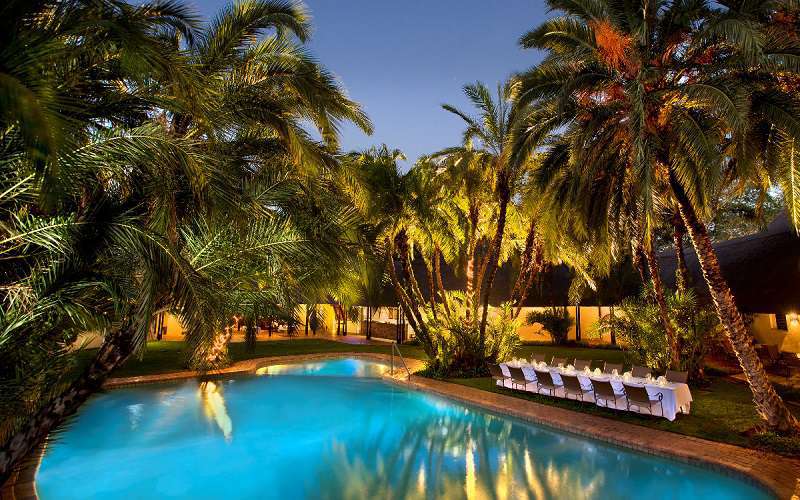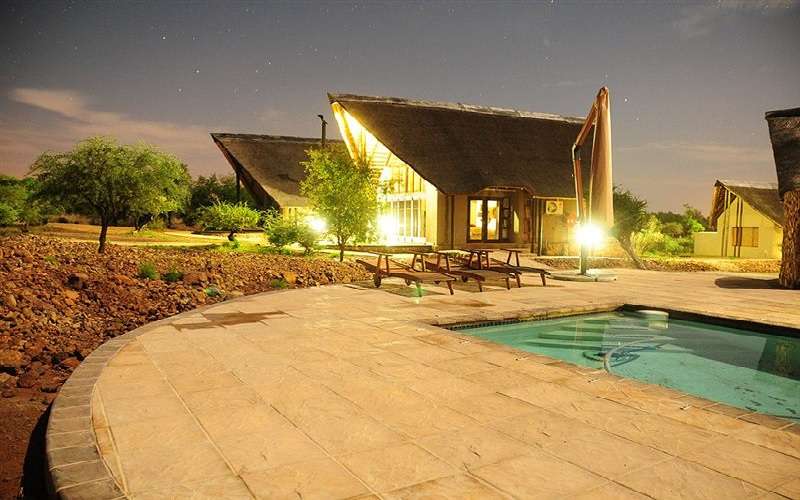The Pilanesberg National Park features a large variety of lodges to meet everyone's requirements including families, honeymoon couples as well as conference delegates. The reserve is an excellent destination for travellers with children as it is only a one and a half hours drive away from Johannesburg in a malaria-free region of South Africa. The Pilanesberg is an extinct volcano, is home to a high concentration of game, making game viewing an unforgettable experience.
- How big is the Pilanesberg? 577 km.
- How old is the Pilanesberg? The park is over 40 years old.
- Who owns the Pilanesberg? This reserve is a National asset which means that the South African Government manages it.
- Is it the Pilanesberg malaria free? Yes, all year round.
- Why does the reserve look circular on the map? The reserve follows the lines of an old volcano crater which erupted 1255 million years ago.
- Is the Pilanesberg recommendable for children? Yes, kids of every age group can go into the reserve in an enclosed vehicle.
- What is the reserve famous for? Operation Genesis in the eighties where over six thousand animals were freed into the park.
- What Animals can I see in the Pilanesberg? Lion, Cheetah, Elephants, Black Rhino, White Rhino, Sable, African Buffaloes, Caracal, Leopard as well as Giraffe, Zebra, Hippos, Impala.
The Pilanesberg reserve is ideal for the following reasons:
- The travellers with a limited amount of visiting time.
- Excellent for families that are travelling with small children.
- Game viewing is of a high standard
- Proximity to Johannesburg Airport
- The park offers an excellent display of all African animals especially Elephant, Rhino and Lion.
The park comprises a large disk-like Geo pattern that is the old crater of a massive extinct volcano which today results in rare rock types, minerals and rock formations in the area. The reserve is administered by the North West Parks Board and is with its 56 252 hectares the fourth biggest national park in the country. The old crater of a long extinct volcano dominates the Pilanesberg National Park. The crater is an impressive alkaline complex was constituted by volcanic explosions thirteen hundred years ago. The reserve is one of the most significant volcanic systems of its type in the world. It's unusual rock varieties, and composition makes it a unique geological highlight.
Visitors can self-drive in reserve on both tarred & gravel roads. Many of the lodges do include guided game drives in their rates. The reserve is home to all the Big Five as well as a variety of other big game species such as zebras, hyenas, giraffes, hippos and crocodiles as well as over 365 bird species. Besides the Big Five visitors also have the opportunity to encounter the nocturnal brown hyena, cheetah, hippo and crocodile. The reserves offer guests a wide diversity of animal and plant life including 363 species of birds, the Big Five and almost every type of animal found in Southern Africa. The reserve lies in a transformation zone from Arid and Thornybush vegetation which means that it can support different species like Springbok and Impala which are not usually seen together. The bird life variety in the park is exceptional. While some birds are migrants, many are year-round inhabitants.


.jpg)

.jpg)



.jpg)
.jpg)
.jpg)

